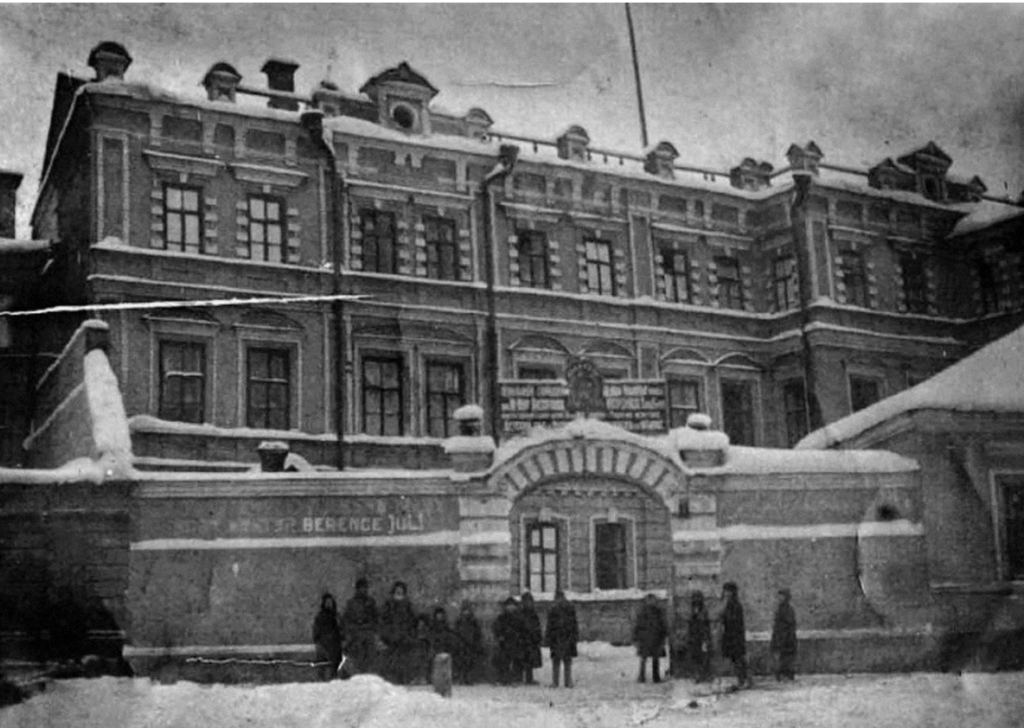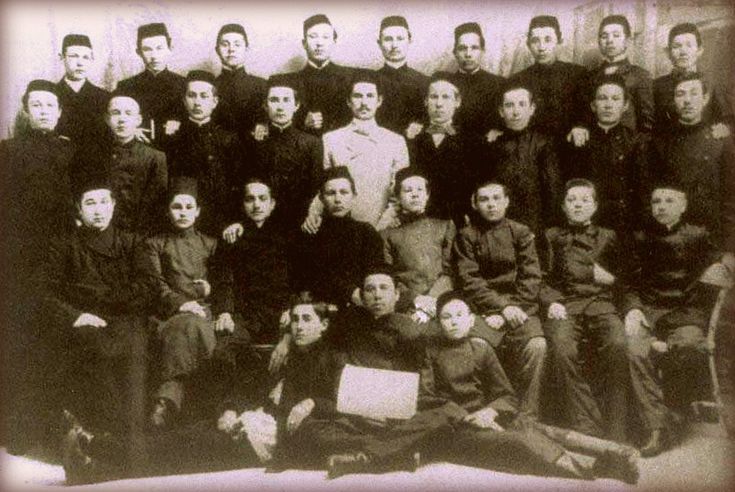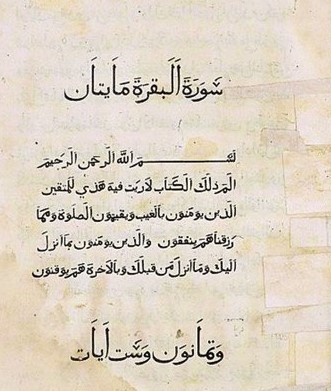History of Muhammadiyah Madrasah Part 1

By the end of the 19th century, there was a pressing need for Muslim schools with new methods of education. In Astrakhan, Kazan, Ufa, Orenburg, and other provincial and district cities throughout Russia, madrasas with progressive educational programs were established. One of the most advanced Muslim schools, renowned among Tatars, was the Kazan madrasah Muhammadiyah.
The founder of this educational institution was the youthful educator Galimzhan Galeev, commonly referred to as Galimzhan Barudi (derived from the Arabic word “barudi” meaning “gunpowder”). In the late 19th century, he gained recognition as a prominent enlightener, book publisher, expert in religion, and philosopher.
This madrasah was built in the business part of the old sloboda in several stages. In 1882 Muhammedzhan Galeev (Galimzhan’s father) built a one-story stone building. Among Muslims the madrasah was called “Muhammadiyah” in honor of the benefactor Muhammedzhan. And in documents it was listed as Galeev Madrasah – after his surname.
However, within the first year of its opening, the number of students became so numerous that they were unable to fit into the educational building. This prompted Muhammadzhan to build an underground room.
Unfortunately, in 1898, the wooden building of the madrasah was destroyed completely by fire. A short time later, Barudi’s acquaintances came to the rescue. They were rich and authoritative people, and with their help, a new stone two-story madrasah building was constructed.
The popularity of Muhammadiyah spread throughout Russia, and soon the premises of the new madrasah became crowded again. Not only Tatars, but also Bashkirs, Kazakhs, Kirghizs, Kalmyks and other Turkic peoples came to learn in this madrasah.
In 1901, the city head Aleksander Lebedev gave permission for the construction of a 3-storey building of the madrasah. Barudi made great efforts to ensure that the modern madrasah met the sanitary and hygiene requirements of that time. The madrasah also had a canteen, kitchen, hospital, shoe workshop, forestry, bookbinding, and vegetable garden. During the winter, students of the madrasah had the opportunity to skate in the winter garden.
In addition to the primary structure, the madrasah maintained a school for impoverished children who were unable to finance their academic pursuits. The madrasah provided children with free clothing and school supplies, and even paid a stipend.
The school for girls at the Muhammadiyah madrasah merits special attention. It was organized by Magruy abystay, wife of Galimzhan Barudi, who organized it.The educational program of the institution, which has been operational since 1890, was formulated for a duration of three years. Both girls and older students were admitted to the school.


